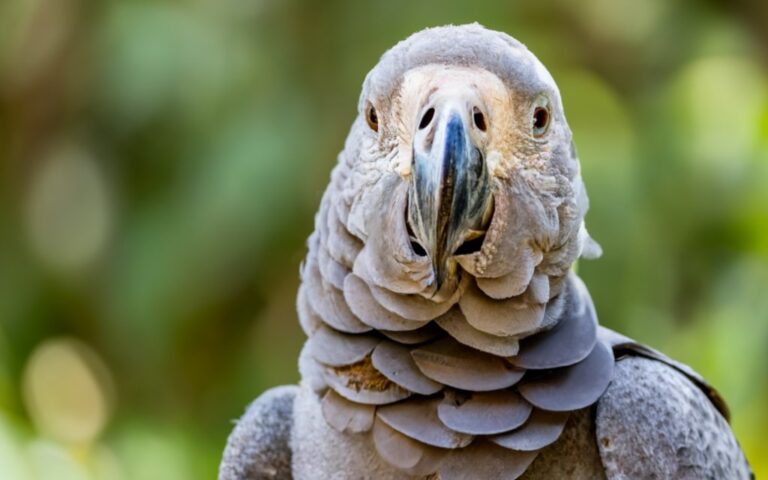What Are The Territorial Behaviors Of African Grey Parrots?
Key Takeaways:
- African Grey Parrots exhibit territorial behaviors to establish and defend their living space.
- These parrots use vocalizations, posturing, and aggressive displays to assert their territorial boundaries.
- Territorial behaviors in African Grey Parrots are influenced by factors like food availability and social interactions.
- Understanding the territorial behaviors of African Grey Parrots is crucial for their proper care and enrichment.
Have you ever wondered what goes on in the mind of an African Grey Parrot?
These intelligent and captivating birds have fascinating territorial behaviors that help them establish and defend their space.
In this article, we’ll delve into the intriguing world of African Grey Parrots and explore their general territorial behavior, marking and signaling techniques, defense mechanisms, and even nesting and breeding habits.
So, if you’re curious about how these extraordinary creatures establish their domain and protect it, keep reading to gain a deeper understanding of the territorial behaviors of African Grey Parrots.
| Territorial behaviors of African Grey Parrots | Description |
| 1. Nesting | African Grey Parrots are highly territorial when it comes to nesting. They will defend their chosen nesting spot fiercely against any perceived threats. |
| 2. Marking | These parrots have a tendency to mark their territory by vocalizing loudly or making specific sound patterns. They may also engage in physical behaviors like wing flapping or head bobbing to assert their presence. |
| 3. Feeding | African Grey Parrots may display territorial behaviors around their food sources. They may aggressively defend feeding areas and may even try to chase away other individuals from accessing the food. |
| 4. Social Interactions | When it comes to their social interactions, African Grey Parrots can be territorial towards other individuals, especially those of the same sex or outside their bonded pairs. They may display aggressive behaviors like biting or lunging to establish dominance. |
Understanding Territorial Behavior in Birds
Territorial behavior in birds is a natural instinct for establishing and defending their own space.
Understanding this behavior helps us comprehend their actions and interactions with their environment.
What is Territorial Behavior in Birds?
Territorial behavior in birds refers to their instinctive need to establish and defend their own designated areas, known as territories.
These territories serve as their exclusive space for various activities such as nesting, feeding, and mating.
Birds often use vocalizations, displays, and physical aggression to communicate and protect their territories from intruders.
It is an important behavior that helps ensure their survival and reproductive success.

Reasons for Territorial Behavior in Birds
Territorial behavior in birds is driven by a few key reasons. Firstly, it helps them secure access to vital resources like food, nesting sites, and mates.
Additionally, protecting their territory ensures the survival of their offspring.
Lastly, territorial behavior allows birds to establish and maintain social hierarchies within their species.

Benefits of Territorial Behavior in Birds
Territorial behavior in birds, including African Grey Parrots, offers several benefits.
It helps them secure resources like food, nesting sites, and mates.
They can defend their territory from rivals, reducing competition.
Territorial behavior also aids in reproductive success by ensuring a suitable environment and protecting their offspring.
Territorial Behavior of African Grey Parrots
African Grey Parrots display territorial behavior.
General Territorial Behavior of African Grey Parrots
African Grey Parrots exhibit territorial behavior to establish and defend their living spaces. They may mark their territory through vocalizations, body language, and scent marking with urine or feces.
This behavior helps them secure resources like food, nesting sites, and potential mates.
Territoriality is a natural instinct in these parrots, ensuring their survival in the wild.

Territorial Marking and Signaling in African Grey Parrots
Territorial marking and signaling are crucial aspects of the behavior of African Grey Parrots. They use various methods to mark their territory, such as vocalizations, wing flapping, and feather displays.
These behaviors are used to communicate with other parrots and establish boundaries.
By understanding and respecting their territorial instincts, we can provide a suitable environment for our African Grey Parrots.

Defense Mechanisms of African Grey Parrots
African Grey Parrots have several defense mechanisms to protect themselves and their territory.
They can vocalize loudly to warn off potential threats, mimic other bird calls to confuse predators, and use their powerful beaks to bite or attack if necessary.
They are also master escape artists and can quickly fly away to safety.
In addition, their ability to blend into their environment helps them camouflage and avoid detection.
These defense mechanisms help African Grey Parrots survive and thrive in their natural habitat.
Territorial Aggression in African Grey Parrots
Territorial aggression is a common behavior in African Grey Parrots.
Causes of Territorial Aggression in African Grey Parrots
Territorial aggression in African Grey Parrots can be caused by a few factors.
One of the main causes is the instinctual need to protect their territory and resources from intruders, including humans and other animals.
This behavior is also influenced by hormonal changes, such as during mating season.
Additionally, previous negative experiences or a lack of proper socialization and training can contribute to territorial aggression in these parrots.

Dealing with Territorial Aggression in African Grey Parrots
Dealing with territorial aggression in African Grey Parrots can be challenging, but there are some effective strategies you can try. Firstly, provide your parrot with adequate space and enrichment to prevent feelings of confinement and frustration.
Secondly, socialize and bond with your parrot to establish a strong trust-based relationship.
Thirdly, use positive reinforcement and training techniques to redirect and discourage aggressive behaviors. Remember, consistency and patience are key when dealing with territorial aggression.
Nesting and Breeding Behavior of African Grey Parrots
African Grey Parrots have unique nesting and breeding behaviors that involve elaborate courtship rituals and the protection of their nest and offspring.
Nesting Habits of African Grey Parrots
Nesting habits of African Grey Parrots include finding tree cavities or using abandoned nests for breeding. They prefer nesting in tall trees or cliff faces to ensure safety and protection for their eggs and offspring.
The female parrot lays 2-4 eggs, and both parents take turns incubating them for about a month.
Once the chicks hatch, they stay in the nest for approximately 10-12 weeks before becoming independent.
Courtship and Mating Rituals of African Grey Parrots
Courtship and mating rituals of African Grey Parrots involve a series of behaviors aimed at attracting a mate and ensuring successful reproduction. These rituals include elaborate displays of vocalizations, dances, wing displays, and head movements.
Males often engage in courtship feeding, where they offer food to the female as a symbol of their ability to provide for a family.
Once a pair has formed, they will engage in mutual preening and mate for life.
Protection of Nest and Offspring in African Grey Parrots
African Grey Parrots are highly protective when it comes to their nest and offspring.
They have several strategies in place to ensure the safety of their young.
They build their nests in tree cavities, providing natural protection from predators.
Both parents take turns incubating the eggs and feeding the chicks.
They are vigilant and will defend their nest vigorously against intruders.
African Grey Parrots also engage in mimicry, imitating the calls of other bird species to confuse potential threats.
These dedicated parents prioritize the well-being of their nest and offspring to ensure their survival.
Managing Territorial Behavior of African Grey Parrots as Pet
To manage territorial behavior in African Grey Parrots as pets, you can focus on providing adequate space, socializing and bonding with them, and using positive reinforcement for training.
Providing Adequate Space and Enrichment for African Grey Parrots
African Grey Parrots require adequate space and enrichment to thrive as pets. Providing a spacious cage is essential, allowing them to spread their wings and move around comfortably.
Enrichment activities such as toys, puzzles, and foraging opportunities help stimulate their intelligent minds.
Regular out-of-cage time and social interaction are also crucial for their overall well-being.
Socialization and Bonding with African Grey Parrots
Socialization and bonding are essential for African Grey Parrots to thrive as pets. Spend quality time together, engage in gentle handling, and provide positive reinforcement.
Create a bond through regular interaction, talking, and play.
Respect their boundaries and allow them to approach you when they feel comfortable.
Frequently Asked Questions about Territorial Behavior in African Grey Parrots
How do African Grey Parrots define their territory?
African Grey Parrots define their territory by marking it with vocalizations and physical displays.
They use calls and screeches to assert their ownership over an area, and they may also engage in aggressive behavior towards intruders.
This behavior helps them establish and maintain their space in their natural habitat.
Can African Grey Parrots be territorial towards humans?
African Grey Parrots can exhibit territorial behavior towards humans, especially if they perceive them as intruders in their space.
They may become aggressive and protective of their territory, which can include their cage, feeding area, or favorite perching spots.
It’s important to respect their boundaries and provide them with enough space to feel comfortable.
Are African Grey Parrots territorial outside their breeding season?
Yes, African Grey Parrots can still exhibit territorial behavior outside of their breeding season.
They may be protective of their environment, resources, and preferred perches, and may display signs of aggression towards other birds or even humans.
Providing them with adequate space and enrichment, socialization, and positive reinforcement training can help manage territorial behaviors.
How can I prevent territorial aggression in my African Grey Parrot?
To prevent territorial aggression in your African Grey Parrot, provide them with adequate space and enrichment, socialize and bond with them, and use training and positive reinforcement. Ensuring they have a comfortable and stimulating environment will help reduce territorial behaviors and promote a peaceful coexistence.
Final Verdict
Understanding the territorial behavior of African Grey Parrots is crucial for their well-being, especially for those who keep them as pets.
Territorial behavior is a natural instinct that serves various purposes, such as resource protection and attracting a mate.
However, it can also lead to territorial aggression, which needs to be managed appropriately.
Providing adequate space, socialization, and training can help in managing their territorial behavior.
By implementing these strategies, you can ensure a harmonious and enriching environment for your African Grey Parrot.






